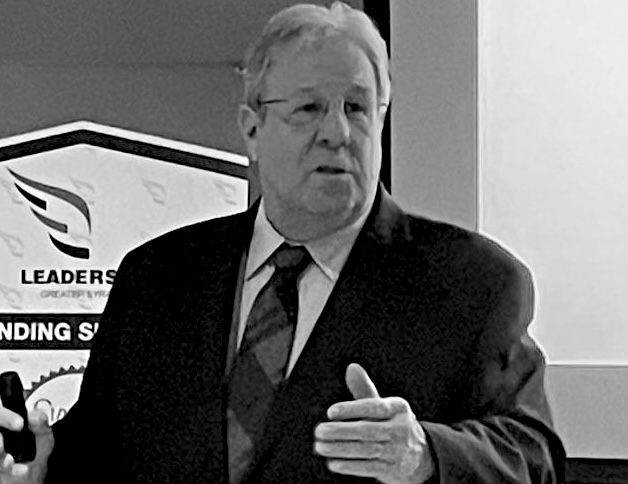By Dr. Rick Timbs
Easy, just relive the overdue, long, and avoidably delayed workings of the state government between mid-January 2025 and toward the end of April 2025 (unsettled, as of this writing).
Seriously, the Executive budget, delivered in mid-January 2025 with numerous policy issues remained unresolved until the end of April 2025. I mean, how long does it take the legislature to interact with the governor even after their early March “one house” budgets. It is disappointing.
Couldn’t elected officials see the need for a rational and punctual budget in the name of the citizens of the state? I refer to the need for school districts to be provided with reasonable state aid budget figures and lead time on potential new laws with financial, policy and operational implications. These loom large in the development of budgets that have a hard deadline for board of education approval (April 25), the submission of the Property Tax Report Card with the state (April 28) and the hard fast date for a public vote to determine the financial fate of the school district (May 20) to be later accompanied with more deadlines for all of the notifications and publications which need to be in place to provide relevant information for school district’s resident voters.
School district leaders understand the need for discussions between the legislature and governor about bail reform, judicial discovery issues, cell phones bans in school districts, the zero-emission bus mandate, and others. But these are not new issues, These could be worked on all year long, specifically in the distance between mid-January to April 1st. By April 1st, they need to be resolved, or first steps taken as if they are evolutionary in nature or abandoned for another time or for the end of the legislative session in June.
We understand the power of adding policy issues to the budget discussions by the governor and the loss of that power after the budget is adopted. We understand the need for the legislature to examine each policy issue carefully. But what we don’t understand is how the discussions between them are absent any need for punctuality. If the governor will not compromise at all and /or the legislature is unable to achieve a compromise then the end game is inevitable. If both parties are willing to compromise then get on with it within the prescribed time, that is, completed by April 1st. And please, let’s not get into the … would you rather have a bad budget on time or good budget late nonsense. The Statewide School Finance Consortium debunked that false choice narrative a decade and a half ago. There must be a good budget and an on-time budget.
There are some things school districts just cannot plan appropriately without.
Primarily, it would be a reasonable projection of state aid. And this year, to make things more complicated school officials are faced with some conflicting state aid projections. Granted some of this situation is due to the governor’s inclusion of a few suggested improvements to the Foundation Aid formula recommended by the Statewide School Finance Consortium for at least a decade. And we are grateful. The change to the Small Area and Income Poverty Estimate (SAIPE) to the formula as a reasonable but not perfect substitute for the 2000 Census data is welcomed. Equally welcomed is the move from the declined relevance of Free and Reduced-Price Lunch (FRPL) data to “Economically Disadvantaged” data that captures a more accurate representation of need and poverty in school district across the state. And the last, embellishment in the State Sharing Ratio portion of the formula to support very needy school districts. The latter is an improvement but not really a final remedy to the distribution of Foundation Aid funds on a more equitable basis.
Additionally, it is noteworthy that the executive budget included a “due minimum” increase in Foundation Aid of 2%. This was a pleasant surprise and is appreciated by all Save-harmless school districts. What increased our enthusiasm for the legislative process was the inclusion of a suggested 3% or 2.9% “due minimum” in the “one house” budgets of the Senate and Assembly, respectively. We will have to wait to see what is contained in the final budget.
We also need to know what new legislation affects our finances, policies, or practices. Two items come to mind immediately.
The first of these is the highly reported “Cell Phone Ban.”
Absent state financial support, or even with it, school district budgets must accommodate whatever legislation is passed and signed into law. For school districts the implications expand beyond the financial aspect of such a potential addition to our obligations. We need to plan implementation within deadlines, institute new policies, provide staff development, change codes of conduct, inform parents and students of the new restrictions and the obligations of all parties, provide official public notifications and the like. Much work needs to be done for the large numbers of school district who have not entered this new space as well as for those that will need to amend and re-articulate their response to the new legislation.
Next is the Zero-emission bus mandate.
The Zero-emission bus mandate continues to loom large within the financial, policy and practice landscape of a substantial number of school districts. It is still a massive state-sponsored initiative, with implementation deadlines. Yes, there are grants available (but not enough for everyone), and transportation and building aid provides some fraction of financial support from the state, but for many school districts, the financial, institutional, and political lift is still too high.
I have been told, although I have no real data on the topic, recent estimates suggest that there are “about” 100 zero-emissions buses on the road and in daily use. By some estimates that leaves “about” 49,900, give or take, yet to replace by 2035, beginning in 2027. I have also been told by many school districts that their most recent transportation studies on the topic reveal that zero-emission buses would only be appropriate for a fraction of their current routes. I also know, with my work with hundreds of school districts, they are currently and within their most reasonable examination of future financial, institutional, and physical structural capacity, lack the ability to sufficiently launch this initiative in a meaningful way.
Granted, while there are school districts that have been able to successfully begin and sustain this initiative, they tend to be geographically small and are favored by access to the power grid needed, suitable topography and possess local resident support. But this is not a widespread situation by any measure.
For the remainder of school districts the situation is clear and quite different. These school districts do not have the money for even small investments in zero-emission buses. They do not have the money to transform their transportation facilities and systems to accept, use and maintain the use of bus charging and maintenance accouterments. They don’t have the money to purchase additional zero-emission buses to their existing fleets to ensure that all their bus routes work with zero-emission bus requirements. They do not have resident support for the purchase, maintenance and security of these fleets and infrastructure. All this and the capacity of the power grid does not /will not exist for a long time, and the list goes on.
While there are suggested strategies that would slow things down with waivers, exceptions, and other methods to chisel away at this initiative, it is clear only a five-to-seven-year delay in implementation will work. Absent this delay period, the initiative remains unrealistic and leaves school district finances, and consequently, desired educational initiatives, in limbo. This is understood by state elected officials, so why won’t they simply delay this “aspirational “initiative until it is achievable?’
I hope this writing outlines a sensible level of discontent we have with state government right now, but I also hope that there will be more improvements to the Foundation Aid formula, that the state budget will be approved by the time you read this, and all of you have successful school district budget votes. We all have an uncertain road ahead and it would be great to end the school year on a high note with passed budgets and renewed vigor towards the next school year. State government has an important and timely role to play. It’s not just …on us.
Be well,
Rick





